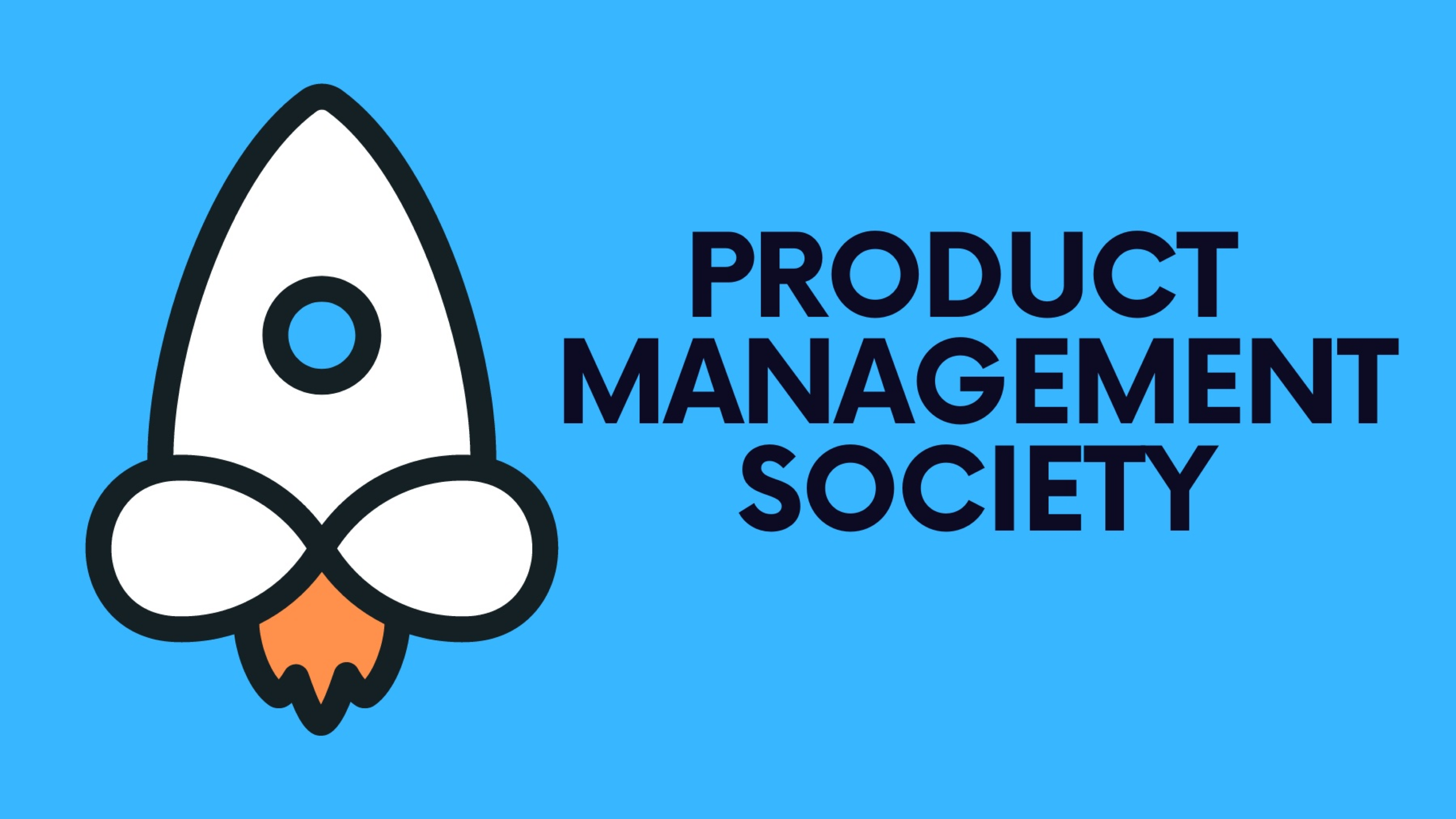AI is transforming product management in 2025 - helping professionals save time, analyze data, and make smarter decisions. From automating feedback analysis to optimizing roadmaps, these tools are reshaping how product managers work. Here's a quick look at the top 7 AI tools making waves this year:
- Chisel: Simplifies feedback analysis, prioritizes roadmaps, and integrates seamlessly with tools like Jira and Slack.
- ChatGPT: A flexible assistant for analyzing feedback, optimizing roadmaps, and automating routine tasks.
- ProdPad CoPilot: Focused on feedback analysis and roadmap creation, with deep product management expertise.
- Zeda.io: Turns customer feedback into actionable insights, helping prioritize features and align with business goals.
- Dovetail: Processes customer feedback, identifies trends, and integrates insights into workflows.
- Productboard AI: Links customer feedback to features and strategic goals, improving decision-making.
- Aha!: Streamlines roadmap planning and idea management with AI-powered prioritization.
These tools are helping product managers boost productivity, improve customer satisfaction, and deliver better results. The right tool can make all the difference in staying ahead in today's fast-paced market.
1. Chisel
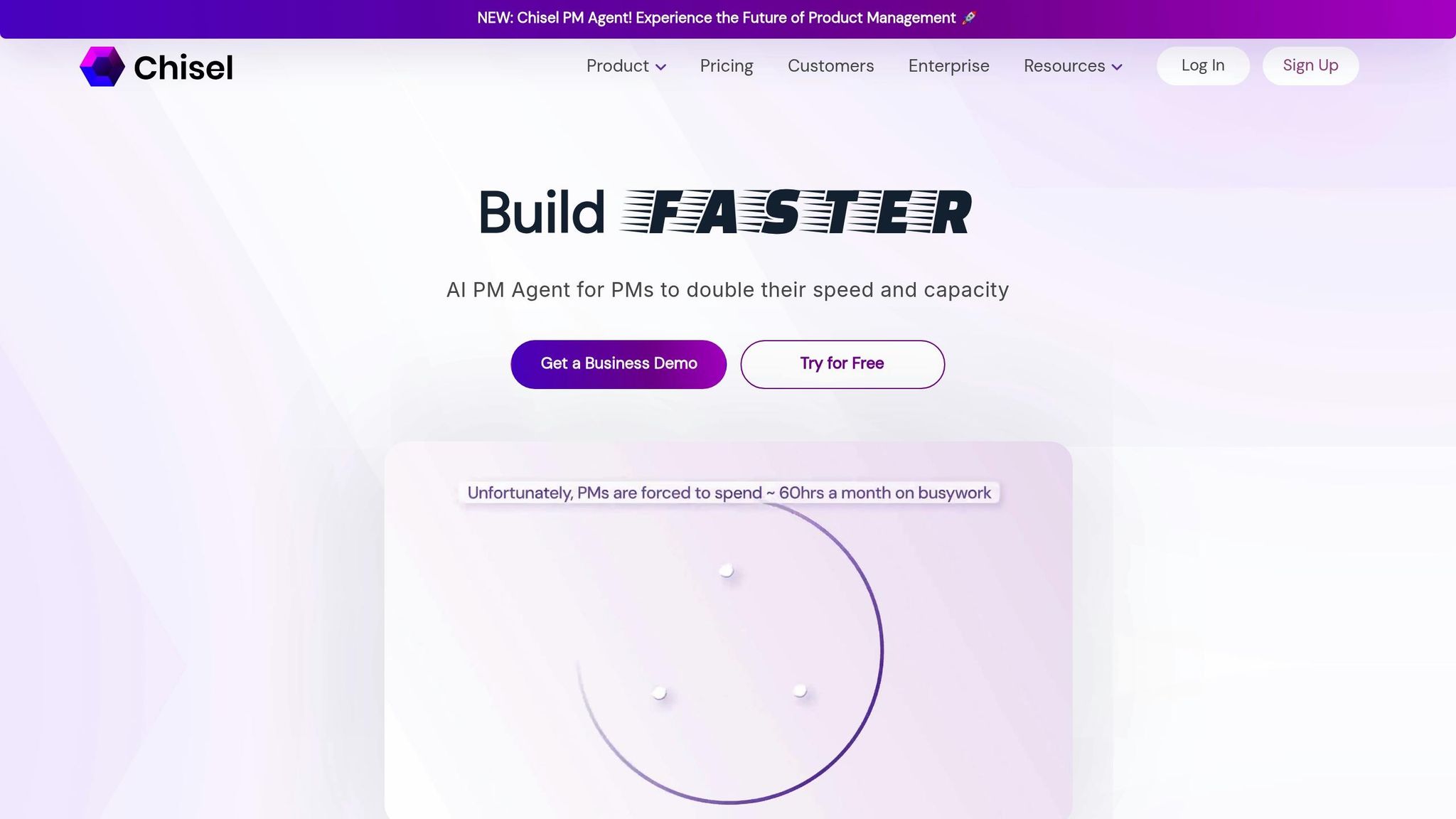
Chisel is a comprehensive AI-driven product management platform designed to bridge customer feedback with business goals. Its standout feature, the AI PM Agent, acts like a virtual Chief Product Officer, taking over tedious, repetitive tasks and streamlining workflows [6].
AI-Driven Feedback Analysis
At its core, Chisel simplifies how product managers process customer feedback. The AI PM Agent automatically classifies and summarizes feedback from various sources, making it easier to manage large volumes of customer insights. For instance, it can tag and summarize thousands of feature requests without any manual effort [6].
The platform pulls feedback from multiple channels - Gong calls, Zendesk and Intercom tickets, app-store reviews, spreadsheets, and surveys - into one unified repository. This eliminates the chaos of gathering input from scattered sources [6].
What sets Chisel apart is its ability to detect shifts in customer sentiment and trends in feedback frequency. This means product managers can identify patterns and address emerging issues early, enabling proactive decisions instead of reactive fixes [6].
Smarter Roadmap Planning
Using these processed insights, Chisel enhances roadmap planning with dynamic prioritization tools. Its Tree, Kanban, and Timeline roadmap views are powered by score-based models that rank features based on their impact versus effort. This keeps priorities aligned with business goals without requiring constant manual updates [6][4].
The result? Product teams save time while ensuring their roadmaps stay relevant and data-driven, even as business needs evolve [4].
Seamless Workflow Integration
Chisel integrates smoothly with tools like Jira, Azure DevOps, Salesforce, Zendesk, Intercom, Slack, and Microsoft Teams. These two-way sync capabilities ensure that existing workflows remain intact [6].
The Azure DevOps integration, in particular, stands out. It maintains parent-child relationships across platforms, syncing all metadata fields in real time. This eliminates duplicate data entry and keeps engineering teams aligned with product management decisions without disrupting their processes [8].
"Single pane of glass for product managers. Team alignment and Audience functionality - Normally, we'd use a combination of spreadsheets, presentations, and market research contracts for this, but Chisel enables coordination of stakeholder alignment and market intelligence analysis from a single tool." - Craig Chadwell, Vice President [7]
Prioritization with a Customer Focus
Chisel’s Team Radar feature tackles a common challenge in product management: ensuring all voices are considered during prioritization. By tracking how priorities align or differ across teams and stakeholders, it provides objective, data-driven insights. This prevents decision-making from being dominated by the loudest voice in the room [6].
"Chisel's Team Radar is a powerful way to drive alignment across the organization. It makes it easy to include team members in prioritization and decision making, shows how priorities align or diverge across the team, and helps proactively manage disagreements. It ensures decisions aren't just influenced by the loudest voice in the room but based on real data and insights." - Shiraz Cupala, Head of Product [7]
Additionally, the platform’s Idea Box and Customer Portals centralize customer input, making it easier to track and act on feedback. Chisel offers a free Starter plan, while its Premium plan is priced at $49 per user/month (billed annually). According to reports, users see a 9x–12x return on investment within 1–2 months [7].
2. ChatGPT
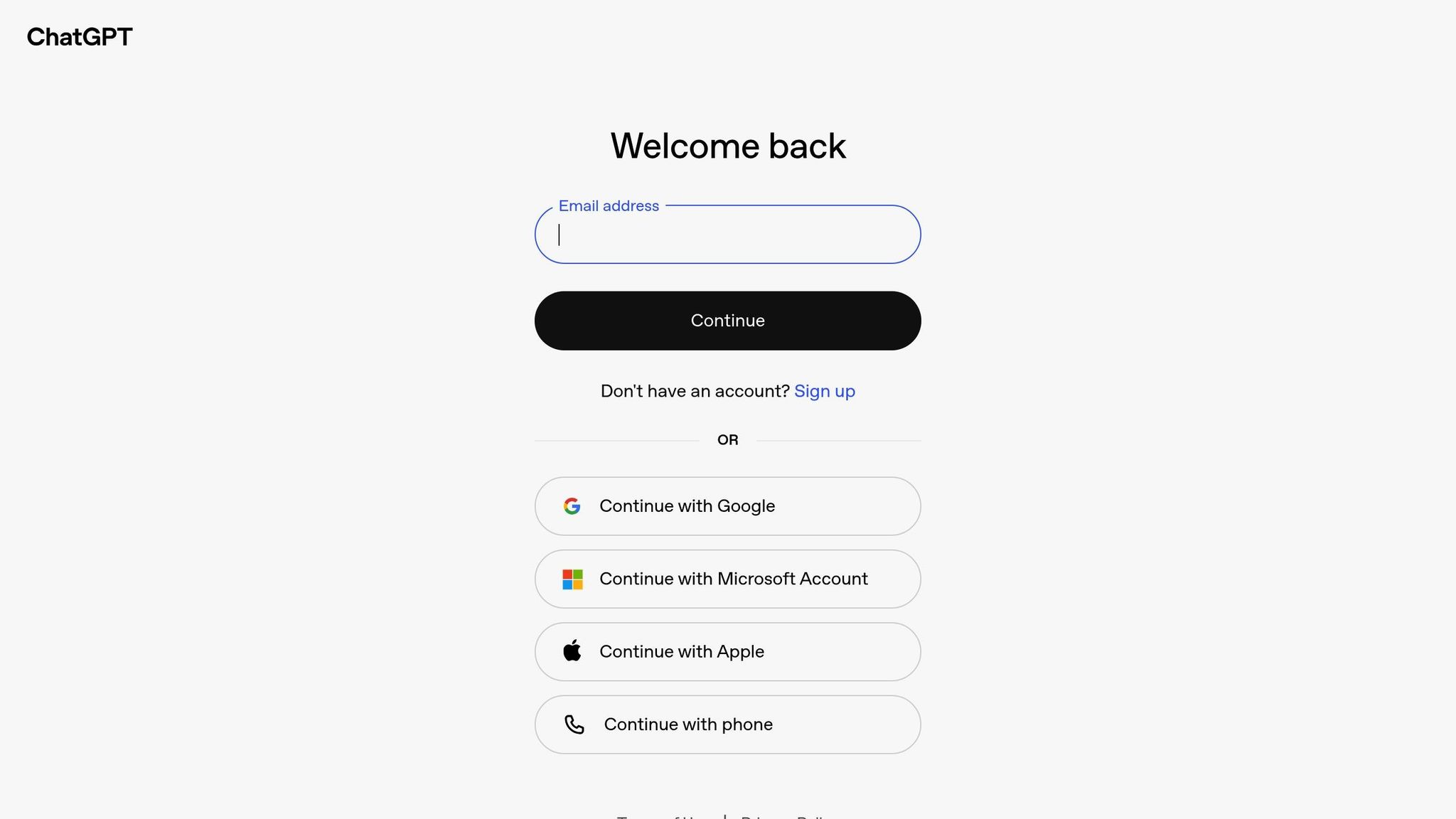
ChatGPT serves as a flexible AI assistant tailored for product managers. Unlike dedicated product management tools, its strength lies in its natural language processing abilities, making it adaptable to a wide range of tasks. According to industry insights, generative AI has boosted product manager productivity by 40%, significantly cutting down the time spent on documentation and coding tasks [4].
AI-Driven Feedback Analysis
One of ChatGPT's standout features is its ability to process and categorize large volumes of customer feedback. It can pinpoint issues like UI flaws, technical challenges, and customer service concerns while also assessing sentiment intensity. By identifying recurring themes and prioritizing them based on relevance, it helps product managers focus on what matters most [9].
For instance, a product manager used ChatGPT to analyze Kickstarter backer feedback. The AI summarized key attraction points such as the product's compact size, travel-friendly design, affordability, innovation, and appeal as a gift.
Success with ChatGPT often depends on how prompts are crafted. Keeping prompts concise and clear leads to more accurate outputs. However, reviewing and refining the AI-generated reports is essential to ensure alignment with specific goals [9]. As Karthik Kamalakannan, Founder and CEO, puts it:
"ChatGPT has become a revolutionary tool with excellent data sifting capabilities, an uncanny knack for learning nuances in customer sentiment, and delivering actionable insights." [9]
This analytical strength makes ChatGPT a valuable tool for refining product roadmaps.
Roadmap Optimization Capabilities
ChatGPT also shines in roadmap optimization by prioritizing features based on factors like revenue potential, customer interest, and feasibility. It leverages frameworks such as RICE (Reach, Impact, Confidence, Effort) and MoSCoW (Must-have, Should-have, Could-have, Won't-have) to make objective decisions. In one example, product data - including vision, strategy, and support tickets - was input to generate a prioritized list. This helped align stakeholders and drive data-driven decisions [12][13][14].
The AI can categorize features using prioritization methods like MoSCoW and create detailed matrices that weigh impact against feasibility [14]. It’s even capable of drafting timelines by grouping tasks into delivery phases, team responsibilities, or quarterly goals [12].
"AI will significantly increase demand for people who can come up with clear specs for valuable things to build." [4]
Integration with Product Management Workflows
ChatGPT fits seamlessly into daily product management workflows, streamlining a variety of tasks. It can assist with market research, PRD (Product Requirements Document) creation, bug testing, customer interviews, and data analysis [10]. Additionally, it automates routine jobs like drafting emails, preparing meeting agendas, and generating PRD templates. Integration with analytics tools allows for real-time metric updates, further enhancing its utility [10][11].
Customer-Centric Prioritization Features
A customer-first approach is critical in product management, and ChatGPT excels in this area. By analyzing user feedback, it identifies common themes and patterns, making it easier to prioritize features that address real customer needs rather than internal assumptions [15].
The AI also evaluates whether proposed features align with the company’s strategy, ensuring a consistent focus on delivering customer value [12]. By processing diverse inputs - such as product vision documents, support tickets, and voice-of-customer interviews - ChatGPT can generate ranked lists of features based on their potential to meet user needs [13].
3. ProdPad CoPilot
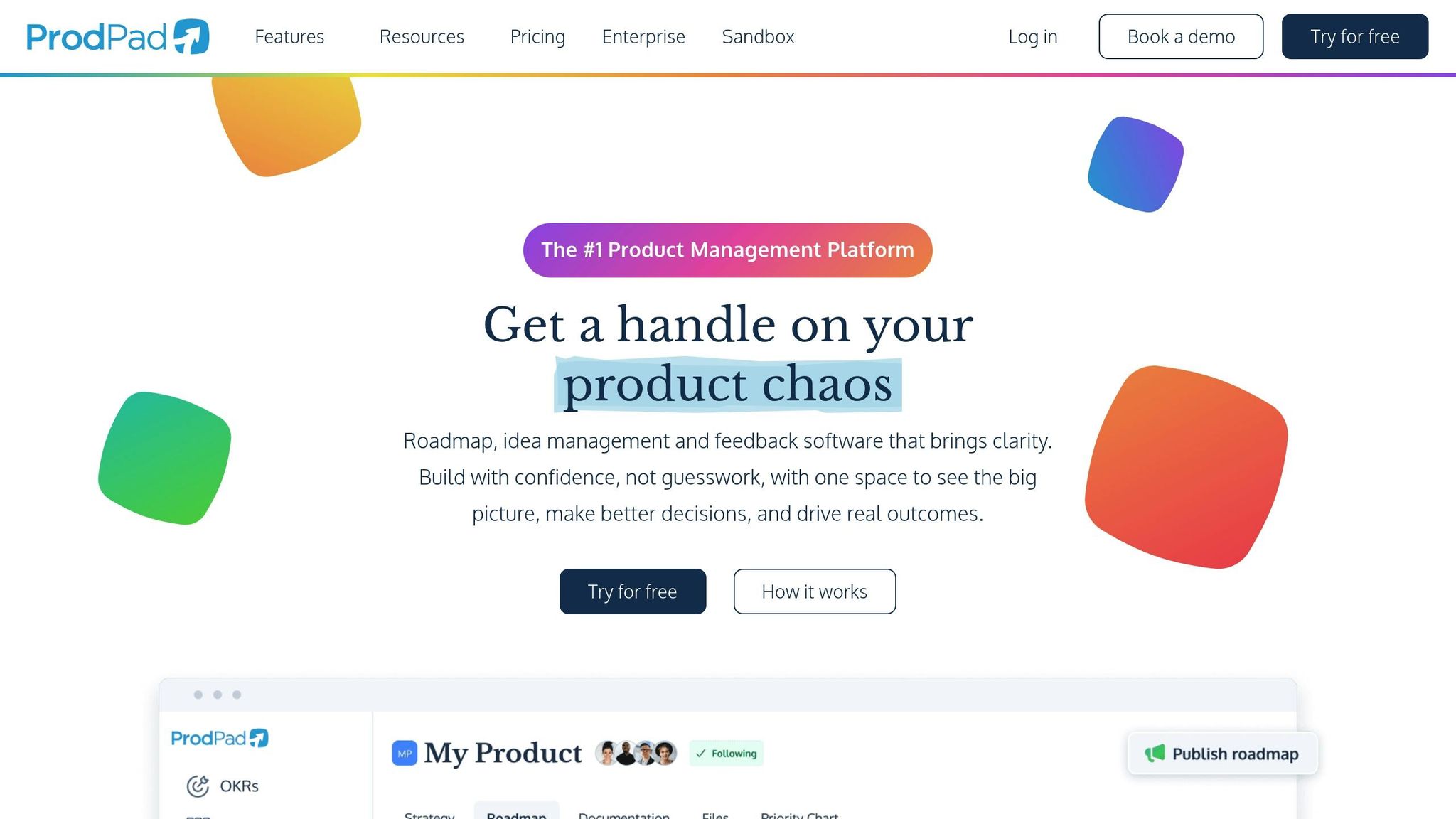
ProdPad CoPilot is an AI assistant designed specifically for product management tasks. Unlike general-purpose AI tools, CoPilot has been trained extensively on product management best practices, enabling it to grasp the unique challenges of the field. By January 2025, this AI had already generated 11,000 idea descriptions, created 5,000 roadmap initiatives, and linked over 6,000 ideas to customer feedback [17].
AI-Driven Feedback Analysis
CoPilot simplifies the overwhelming task of analyzing customer feedback by turning large volumes of data into actionable insights. It processes attachments, flags duplicate ideas through similarity matching, and condenses lengthy materials - like interview transcripts or support tickets - into concise summaries. This allows product managers to quickly identify what matters most. To date, CoPilot has summarized over 2,500 pieces of feedback and created 2,500 user stories for its users [17].
"We have spent many thousands of hours setting the stage for CoPilot. Feeding the model with carefully chosen sources of best practice knowledge, adding more and more detail to the system instructions to give CoPilot a foundational context that means it always answers from a 'Product' perspective."Simon Cast, Co-Founder and CTO, ProdPad [16][17]
This advanced feedback analysis naturally supports and enhances roadmap planning.
Roadmap Optimization Capabilities
CoPilot takes the hassle out of roadmap creation by automating much of the manual work. It processes attachments, generates new roadmaps, and transforms input like spreadsheets or slide decks into dynamic, interactive plans. This frees up product managers to focus on strategy. Additionally, CoPilot handles writing, prioritizing, and organizing tasks, making roadmap management more efficient [17][19].
Integration with Product Management Workflows
CoPilot fits seamlessly into the broader ProdPad platform, working with existing roadmaps, idea backlogs, customer feedback, and workflow tools. It allows users to query internal product data, automates repetitive tasks, and even provides coaching based on best practices. For new team members, it serves as an onboarding assistant, answering questions and helping them get up to speed. CoPilot can also handle stakeholder queries, giving product managers more time to focus on strategic initiatives. Integrations with tools like Jira, Slack, and Salesforce ensure smooth collaboration and execution across teams [18][19].
"We had to wait for the technology to catch up to our vision of making Product Managers' lives easier. Generative AI was the leap that has helped us realize the vision we first articulated many years ago."Simon Cast, CTO & Co-Founder, ProdPad [17]
Customer-Centric Prioritization Features
CoPilot excels at uncovering themes in customer feedback and linking them directly to roadmap initiatives. By analyzing customer input, it helps product managers prioritize tasks that align with customer needs and business goals. This ensures that product development efforts focus on what will have the most impact. By connecting feedback to specific strategic actions, CoPilot addresses a core challenge for product managers: balancing customer satisfaction with business outcomes [19].
"We started ProdPad back in 2012 for the express purpose of saving Product Managers time so they can focus on driving results... Now, finally, the technology has caught up so we can accelerate our journey to that reality for the Product Management world."Janna Bastow, Thought-Leader and ProdPad Co-Founder and CEO [16]
4. Zeda.io
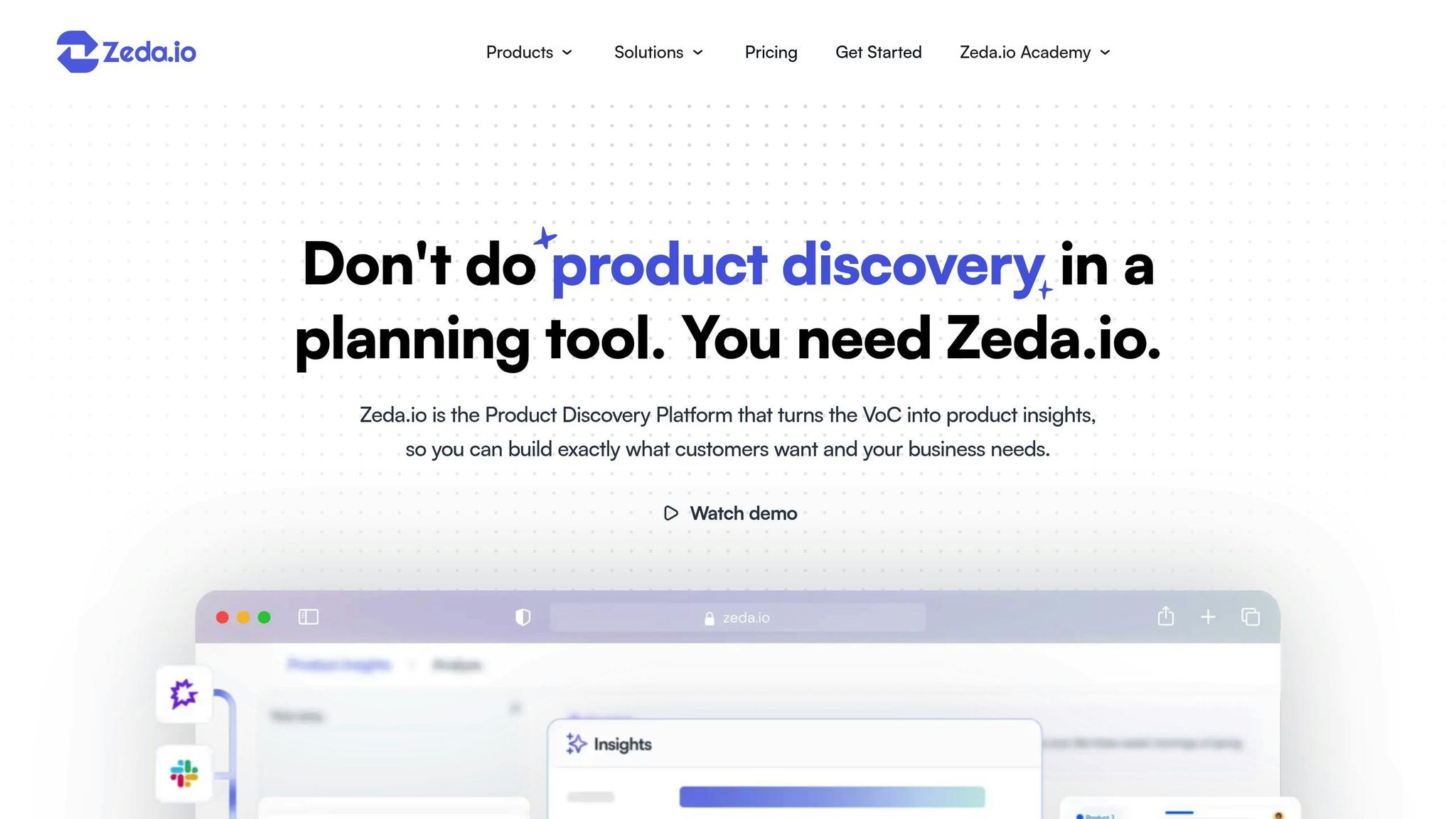
Zeda.io is a product discovery platform designed to turn Voice of Customer (VoC) data into actionable insights. By leveraging AI, it empowers product managers to create customer-centric products that also align with business objectives. Users have reported impressive outcomes, including up to 50% growth in sales and a 20% drop in customer churn rates [20].
AI-Driven Feedback Analysis
One of Zeda.io's standout features is its ability to automatically gather and analyze customer feedback, eliminating the need for manual data aggregation. Its AI processes vast amounts of feedback, identifying trends and recurring issues while categorizing the data to reduce human bias [30, 31].
"If you want to redesign your feedback loop to extract concrete customer insights in no time, then there is absolutely no other tool like Zeda.io."Rahul Shah, Senior SVP & GM, Marqeta [20]
Roadmap Optimization Capabilities
Zeda.io simplifies product planning with customizable roadmap templates [21]. It helps product managers prioritize features based on their potential revenue impact and target the most affected customer segments. The platform includes prioritization frameworks like RICE scoring and the Value vs. Effort matrix [22], and it supports goal alignment through OKRs, turning product visions into actionable plans [34, 35]. Additionally, it offers public roadmaps that allow real-time customer feedback to be incorporated seamlessly [21].
"Zeda.io overall is a very customizable tool for product managers, especially since different product managers/companies might have their own ways of working."Michael H., Product Manager [23]
Integration with Product Management Workflows
Zeda.io integrates with over 5,000 applications [20], consolidating feedback from tools like Slack, email, Microsoft Teams, and customer portals [25]. It also provides two-way synchronization with development platforms such as Jira and Linear [24], as well as CRM systems like Salesforce and HubSpot, giving product teams a unified view of the customer journey. By streamlining these workflows, teams save more than 90 hours in collaboration time. Pricing starts at $499 per month with an annual commitment, which includes dedicated migration support [30, 39]. These integrations make Zeda.io a powerful tool for managing feedback and product planning across platforms.
Customer-Centric Prioritization Features
Zeda.io excels at helping product teams validate ideas and predict opportunities using AI-powered analysis. By linking feedback to revenue impact, it enables product managers to identify the features that will have the greatest effect on customer satisfaction and business growth. This data-driven approach has allowed teams to develop product strategies in just one-third of the usual time [20].
"Zeda.io is a game changer. This is by far the best way to leverage AI for customer-obsessed product teams. Product teams should definitely give it a try."Saurabh Pareek, Director of Product Management, PayPal [20]
sbb-itb-b7985d4
5. Dovetail
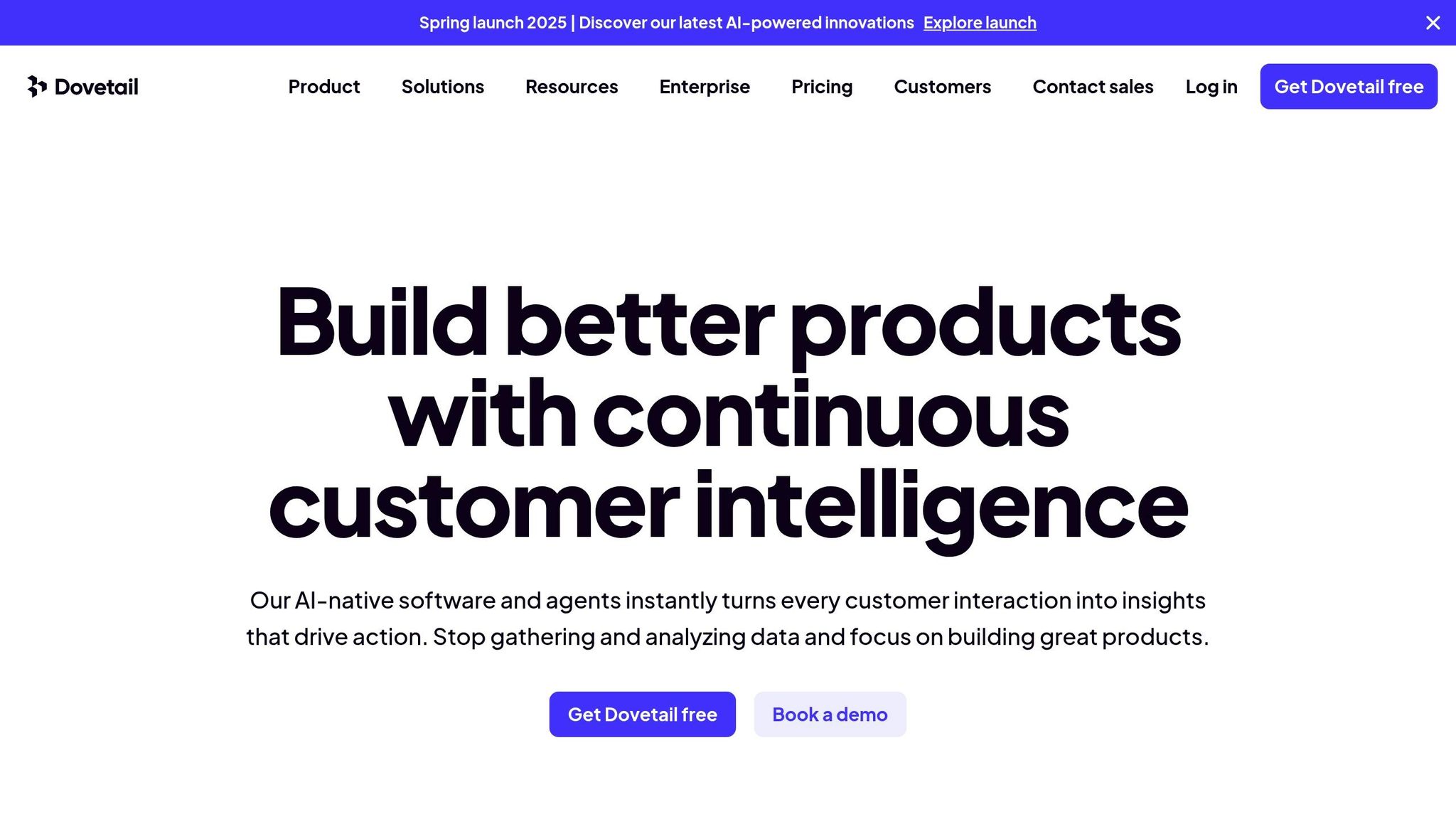
Dovetail is changing the way product managers handle customer feedback by turning scattered data into actionable insights. This AI-driven customer intelligence platform processes input from interviews, surveys, and usability tests to help teams make informed, customer-focused decisions. Companies using Dovetail have reported an impressive 236% return on investment, showcasing its ability to boost product management efficiency [26][27]. Let’s dive into how Dovetail’s AI features transform raw feedback into strategic actions.
AI-Driven Feedback Analysis
Dovetail’s AI tools - like Magic Transcribe, Summarize, and Highlight - are designed to simplify the analysis of customer interactions. They extract key themes, identify pain points, and gauge sentiment from interviews, surveys, and usability tests [26]. Beyond that, the platform organizes support tickets, NPS scores, and reviews, keeping users informed about emerging trends and potential issues [27].
By using Dovetail, the time required to share customer insights has been slashed from 100 hours to just 10 [27]. After its version 3.0 launch in October 2024, major companies like Amazon, Canva, Meta, Notion, and Mayo Clinic reported saving over 38 hours per week thanks to its AI-powered features [30].
"Dovetail instantly reduced my workload from 100 hours down to 10 to share our customer insights."Eric Liu, Product Manager at Notion [30]
"Since using the AI analysis features, my time per interview has gone down by about half. Kudos, Dovetail!"Ali Moody, Senior Designer at GrandPad [30]
Integration with Product Management Workflows
Dovetail fits seamlessly into existing workflows, making it easier for product managers to centralize and analyze customer data. The platform supports data imports from tools like Google Drive, OneDrive, Zoom, Zendesk, and Intercom [28]. When it comes to sharing insights, Dovetail integrates with Slack, Microsoft Teams, Notion, Productboard, and Atlassian products like Jira, Confluence, and Trello [28].
In June 2025, Dovetail enhanced its integrations, allowing teams to query customer data directly within Slack and Microsoft Teams. This upgrade keeps teams focused within their usual platforms, eliminating the need to switch between tools [28].
Additionally, Dovetail works with Zapier to automate workflows. For instance, new insights discovered in Dovetail can automatically create notes in Productboard, ensuring customer feedback directly influences product planning [29].
Customer-Centric Prioritization Features
Dovetail helps product teams prioritize features based on real customer needs instead of guesswork. Its AI processes qualitative data from video calls, documents, and surveys to uncover patterns that guide strategic decisions [30]. This data-driven approach benefits not just product teams but also sales, marketing, and customer success teams, enabling them to better address customer pain points and seize market opportunities.
One standout feature, Channels, simplifies the process of identifying improvement areas in customer feedback. Teams can upload survey responses and receive AI-generated summaries, making it easy to highlight which features will have the biggest impact on customer satisfaction [30].
"Channels has helped us uncover important themes for improvement in customer feedback without going through tens of hours of manual analysis."Rody van Vianen, Senior Product Marketing Manager at PressReader [30]
"Channels has quickly become a key tool, helping me spot patterns and consolidate themes across complex feedback. What used to feel impossible now takes minutes, saving hours of work."Nuria Tain, UX Researcher at PensionBee [30]
Another feature, Ask Dovetail, allows users to query customer data using natural language. This makes it easier to find specific insights and ensures that product roadmaps are based on solid customer evidence rather than internal assumptions [30].
6. Productboard AI
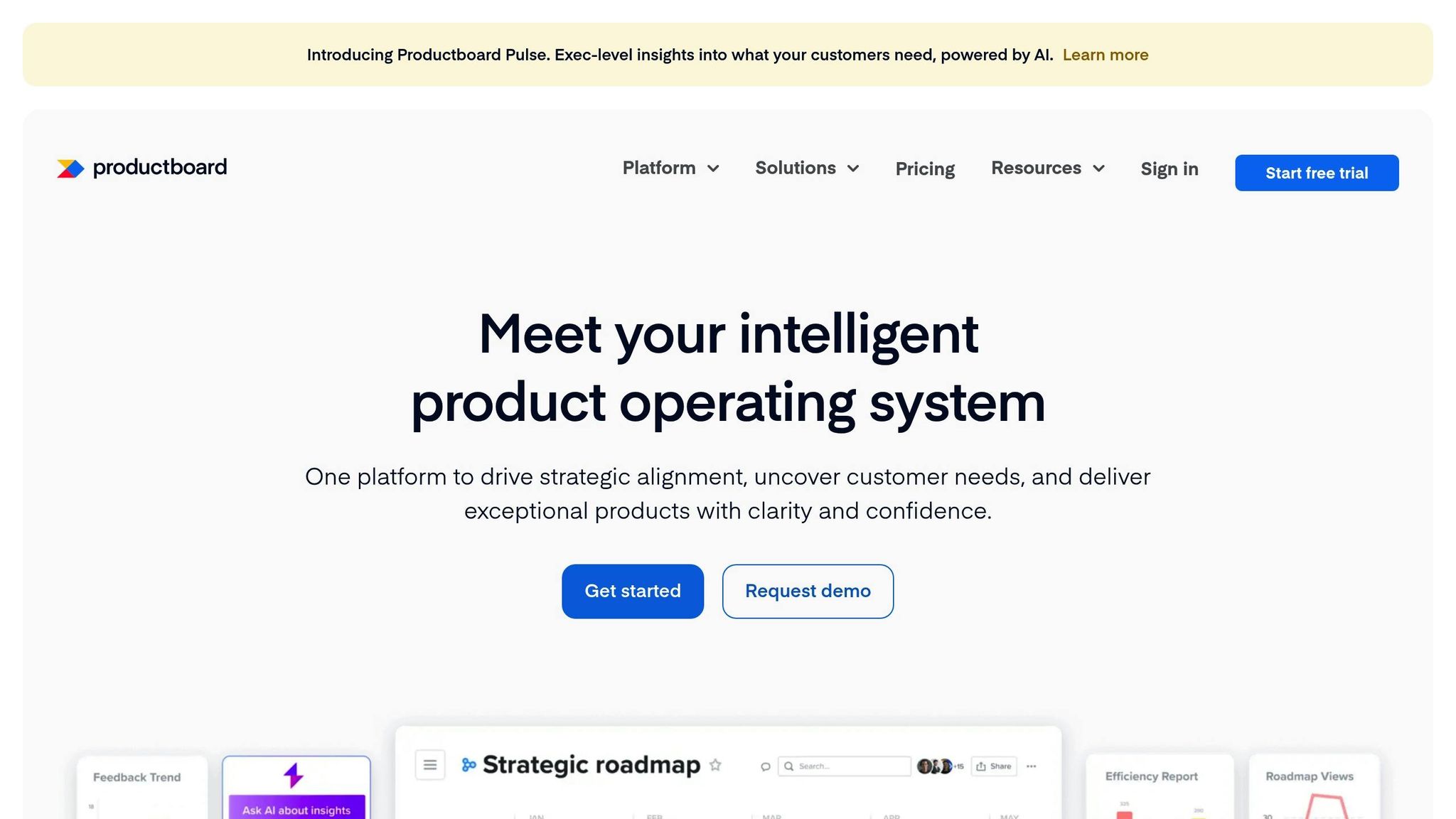
Productboard AI transforms how teams handle feedback and plan roadmaps by embedding artificial intelligence into the heart of product development. By linking customer insights to feature ideas and strategic goals, organizations have seen impressive results - some boosting their note processing rates from 50% to over 80% and increasing feature linking by 30% [32]. Let’s explore how its advanced analytics, integrations, and multilingual capabilities make a difference.
AI-Driven Feedback Analysis
Productboard AI simplifies the overwhelming task of processing feedback by turning extensive input into concise, actionable summaries. Whether it’s conversations, emails, or chat threads, the tool highlights key points so product managers can quickly understand customer needs [31]. Its AI-powered search connects related feedback to specific features, while the topics and themes feature automatically categorizes feedback and tracks trending insights, offering real-time sentiment updates [31][32].
"With Productboard AI we can summarize insights instantly and find new patterns from the feedback easily, rather than summarizing each note manually. This process can be used to summarize hundreds of notes at the same time, which was not possible previously."Iiro Nurmi, Product Operation Manager, Smartly [32]
Roadmap Optimization Capabilities
Using predictive analytics and diverse data sources, Productboard AI enhances strategic planning. It refines market research, pinpoints customer priorities, and validates ideas, leading to more accurate demand forecasts (improved by 20%), a 25% increase in customer satisfaction, faster A/B testing insights (15–30% quicker), and better retention along with a 30% reduction in time-to-market [33][34].
Integration with Product Management Workflows
Productboard AI connects seamlessly with popular tools like Jira, Azure DevOps, Zendesk, and Slack, ensuring a smooth workflow across the product lifecycle [36]. Feedback is automatically linked to feature ideas, and teams can customize this process by choosing note sources, including historical data, and setting priority levels [37]. In April 2025, HeliosX Group demonstrated how automated AI workflows consolidated development progress, usage metrics, and sentiment data into weekly product health updates, uncovering funnel drop-offs [35].
Customer-Centric Prioritization Features
The platform ensures that teams focus on what truly matters to their customers and business by processing feedback from various sources and languages. For instance, Zenchef uses Productboard AI to manage feedback from hundreds of restaurants across six countries and eight languages, ensuring nothing gets overlooked [32]. This approach has significantly improved how feedback is processed and connected to features.
"Productboard AI has allowed us to collect, triage, and make decisions based on feedback from hundreds of restaurants across six countries and in eight different languages. It doesn't matter how many languages my PMs speak; with Productboard, all feedback is valid and quickly digested."Felipe Mury Botelho, Lead Product Operations, Zenchef [32]
7. Aha!
Aha! is an AI-powered platform designed to simplify roadmap planning and idea management for product managers. With over 1,000,000 product builders relying on it, Aha! incorporates AI directly into its text editor, making tasks like writing notes, descriptions, and comments smoother and more efficient [33].
AI-Driven Feedback Analysis
One standout feature of Aha! is its ability to automatically summarize customer feedback. The platform transforms qualitative input into prioritized feature requests, saving teams from the tedious task of manually reviewing comments and support tickets. It also identifies patterns and trends in real-time, turning valuable insights into actionable priorities [38].
Smarter Roadmap Adjustments
Aha! uses AI to evaluate factors like customer impact, revenue potential, and competitive positioning, offering smarter suggestions for roadmap adjustments. Teams can also score features with data-driven metrics, ensuring that development efforts align with overarching strategic goals throughout the product lifecycle [41].
Seamless Workflow Integration
Aha! integrates effortlessly with over 30 popular development tools, such as Jira, Azure DevOps, Google Chat, Slack, Salesforce, and Zendesk. This allows teams to keep their existing workflows intact while benefiting from Aha!'s AI-powered features. Additionally, the native integration across Aha! products ensures a smooth transition of ideas from initial concept to fully developed features [44][45].
"Aha! provides a complete picture across our entire portfolio. We can quickly access product information at any level and see how it ties to the overall strategy."Michael Morris, Director of Global Product Management at Experian [2]
Customer-Focused Prioritization
Aha!'s prioritization tools excel at capturing and organizing customer feedback through its idea management system. In fact, about one-third of all new features on product roadmaps stem from ideas submitted via the Aha! idea portal. The platform's product value scoring system further helps teams align their work with both customer needs and business objectives [42][43]. This focus on customer insights ensures product managers stay ahead in a competitive market.
"Aha! simplifies planning, resource allocation, and reporting for 15 product lines that all rely on a single development team. With Aha! we are able to forecast and plan effectively with a much longer time horizon."Cy Caine, SVP - Strategy & Product Development, Haymarket Media [43]
Pricing starts at $74 per user per month for Aha! Roadmaps, with an additional $49 per user per month for Aha! Ideas. The platform's user satisfaction speaks volumes: 89% of users recommend it, 97% plan to renew their subscriptions, and 89% believe the cost is justified by the value they receive [39][40].
Conclusion
The role of product management is shifting rapidly, with AI becoming a key player in this evolution. Today, 75% of product managers are already leveraging AI tools, leading to impressive results like a 30% increase in customer retention, 30% faster time-to-market, and a 40% jump in productivity [1][33]. Companies are also reaping benefits such as 25% higher customer satisfaction, 40% lower operational costs, 20% better demand forecasting, and A/B test insights up to 30% faster [33].
These numbers highlight the game-changing potential of AI-powered tools. Whether it’s Chisel’s roadmap intelligence or Aha!’s customer-focused prioritization, there’s a solution tailored to solve the toughest challenges in product management. From prioritizing features and analyzing customer feedback to streamlining cross-functional communication, AI is reshaping how product managers work.
As Sundar Pichai, CEO of Google, aptly puts it:
"AI is probably the most important thing humanity has ever worked on. I think of it as something more profound than electricity or fire." - Sundar Pichai [6]
To succeed in this fast-changing landscape, it’s crucial to adopt AI wisely. Start by pinpointing your biggest challenges and choose tools that address them directly [3]. Build a strong data infrastructure first, and roll out AI adoption gradually, tracking clear success metrics along the way [33]. Importantly, AI isn’t here to replace product managers - it’s here to enhance their capabilities, allowing them to achieve even greater results [5].
With the global AI market expected to hit nearly $2 trillion by 2030 [46], the time to act is now. By automating repetitive tasks, product managers can focus on what really matters: strategic planning, building relationships, and delivering the human touch that customers value most [3].
As Andrew Ng, a leading AI expert, noted:
"AI will significantly increase demand for people who can come up with clear specs for valuable things to build" [4].
The product managers of tomorrow will be those who skillfully combine AI-driven efficiency with a human-centered approach. Dive into these tools today and position yourself as a leader in the future of AI-powered product management.
FAQs
How can AI tools like Chisel and ChatGPT enhance product management workflows?
AI tools like Chisel and ChatGPT work effortlessly with popular platforms like Jira, Azure DevOps, and Salesforce. They take care of repetitive tasks such as drafting product requirement documents (PRDs), organizing feature priorities, and analyzing user feedback to uncover key insights.
These tools also make teamwork smoother by simplifying communication across cross-functional teams, keeping everyone on the same page. By cutting down on manual tasks and offering useful insights, they free up product managers to concentrate on strategic decisions and creating outstanding products.
How can AI improve feedback analysis and roadmap planning for product managers?
How AI Enhances Feedback Analysis and Roadmap Planning
AI is reshaping how feedback analysis is done by processing massive amounts of customer input in a fraction of the time it would take manually. It identifies patterns, pinpoints actionable insights, and brings attention to areas that need improvement. This allows product managers to address user needs more efficiently and base their decisions on solid data.
When it comes to roadmap planning, AI taps into multiple data sources - like market trends, customer behavior, and product usage - to predict demand, rank feature priorities, and simplify the planning process. By incorporating AI, product managers can design roadmaps that are more strategic and responsive, leading to better product results and improved team performance.
How can product managers ensure AI-driven decisions support their company's goals and meet customer needs?
To make sure AI-powered decisions align with both company objectives and customer expectations, product managers should focus on gathering ongoing customer feedback and conducting user research. This approach helps uncover critical pain points and customer needs, ensuring that AI insights are tied to practical, real-world scenarios.
Leveraging AI for tasks like prioritizing features, automating repetitive processes, and analyzing data trends enables managers to dedicate more time to big-picture strategies that add value for the business and its customers. By staying customer-focused and consistently aligning AI-driven outputs with strategic goals, teams can seamlessly and effectively integrate AI into their workflows.
If you’re finding this blog valuable, consider sharing it with friends, or subscribing if you aren’t already. Also, consider coming to one of our Meetups and following us on LinkedIn ✨
